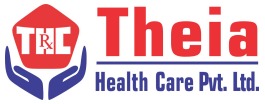Dr Ashok Omray, Pharma Consultant, points out that despite significant advancements, the Indian pharma industry grapples with quality control issues. He highlights the need for stringent internal controls and adherence to CGMP standards to maintain credibility and ensure public health safety
We are basking in the glory of NDAs, ANDAs, new molecules, biosimilars, and technological advances coupled with quality optimisation and training at the global level at par with Europe, the US, and Japan, doubling and trebling international trade in the next five years. We heartily enjoying the third or fourth ranking in the world in terms of volumes produced and supplied to the world in addition to meeting our domestic medicines requirements. We seem to be making advancements in cancer research, autoimmune diseases, genetic disorders, nanotechnology, and targeted delivery. We are writing 1000 research papers and 500 patents every day (needless to talk about quality, authenticity, and correctness). In all international and national scientific conferences, we collect a lot of applause and praise, this is the testimony of our intelligence, hard work, resourcefulness, and scientific aptitude.
I may sound very pessimistic/sarcastic and adhering/subscribing to the old systems of quality and manufacturing. Most shocking is the repeated and frequent reports of spurious, misbranded, and substandard drugs being sold across the country (reports with names of drugs and companies are published in national, regional, and local newspapers) reflect a very sad state of affairs. We are proud to call ourselves as “Pharmacy of the World” and with such news every alternate day what image and impression we are creating is a matter of concern. I receive at least three such published pieces of evidence and raid details every day from state FDAs which exposes our approach, mentality, and treating life very raw.
Such things give enough indications that our internal control on the quality of domestic products is very casual, loose, unattended, and poor. We are happy for the lowest level of compliance as permitted by the monographs (viz. Assay 90 per cent D.T. 15/30 minutes, Dissolution – comply at S2 stage at initial stage analysis, etc.). Quite likely, the world and we are immune to such incidences of quality dilution/compromise/ non-compliance, and our offshore customers know that the supplies for them will be manufactured efficiently in different manufacturing plants under strict quality assurance, monitoring, and compliance. Let the country (India) deal with its internal problems and our businessmen are also focused on multiple levels of quality compliance and now we are champions in maintaining dual rather than multiple standards which are effectively supported by our scientific/technical and regulatory personnel. We also procure different grades of active materials, and excipients and at times do not maintain recommended manufacturing and environmental conditions. The training and technical expertise are farfetched.
It’s a pity that the Drugs and Cosmetics Act and Rules have been effective since 1940 and 1945 but the mentality of businessmen and supporting scientific and technical experts has been looking for the loopholes and gaps to meet the lowest level of standards rather than having strict in-house control and monitoring. As a result, the quality is still deteriorating. We have no respect for CGMP when it concerns the supply of drugs to our population and also to a few semi-regulated countries.
The drugs are treated like commodities (potatoes and onions, even these vegetables we pick up after selecting healthy pieces). In the name of cheaper generic medicines, the people are ready to compromise for the drugs manufactured by unknown or unheard type companies. I understand that the packaging and storage conditions must not be compromised for a particular molecule for the obvious concern for stability and efficacy. The primary packing must not be different whether it is a generic or branded generic product. The secondary and tertiary packs may be as per preference or supply requirements and transportation (logistics).
The experts in formulation of the drugs and packaging always talk big and how much the whole science and technology is respected needs to be seen and assessed for product performance. In several cases the storage and packaging (which may also be a means of administration) costs can be much more than the product itself, hence it is very critical for generic (for domestic market) manufacturers to be aware of this as well as use the correct materials and follow the right processes (Called CGMP – Current Good Manufacturing Practices). Unfortunately, in India, we still work like obedient workmen and follow CGMPs if the products are meant to be sent to Europe, North America, Australia, Japan, and a few more regions.
I have been thinking about this issue for more than two decades but nothing much has changed. This requires a complete blood transfusion and cerebral transplantation for the whole country. It is important to understand that every subject cannot be taught by bureaucrats and political leaders, they can teach economics, urban and rural health issues, social factors, and supply matters.
In 2024 and the decade to follow, we are likely to make amazing progress in the areas of drug research for critical diseases. The money invested in R&D, both by the government and entrepreneurs is phenomenal, therefore the expectations are that we have to be truthful and our focus must be success coupled with safety and acceptance by world regulatory bodies. The need of the hour is to evolve and create synergy amongst various medicine practices prevailing in the country. Science and evidence (composition, concentration, characterisation, clinical and therapeutic efficacy with consistency) based research is needed for better health and cure. The government and health authorities will have to sync to ensure that medicines and healthcare systems cannot be run per individual’s likes or dislikes. National health and compliance to quality and current standards coupled with efficacy and safety are most critical.
